During the past two centuries many have come to study and excavate the monument. These include French scholars accompanying Napoleon’s army in 1798, Caviglia in 1816, H. Vyse in 1840, Mariette in 1853, Kamal and Daressy in 1909 and Baraize in 1926. It was Baraize who first began restoration work, by renovating the head using cement, and clearing the sand completely around the Sphinx. Another problem is caused by the rising water table, which evaporates, leaving salts behind. These salts react with the limestone, causing it to become powdery and to crumble. Pollution from the nearby city of Cairo, together with heat, wind, sand and humidity are all agents in the monument’s slow process of disintegration. In 1982, stones were lost from the north paw and in 1988 a large stone fell from the Sphinx’s shoulder. From 1989 onwards, the restoration project entered a more enlightened phase, with more thought being given to the monument’s long-term preservation in its original form. The restoration project was planned in three stages: first, to restore the southern side, next the northern side and the chest and lastly, to protect the whole monument from the ravages of the elements. The large old stones and cement were removed from the southern side and replaced with new stones from a quarry at Helwan, which contains rock consistent with the limestone of the original structure. Mortar made of lime and sand replaced the cement as a fixative, and the chest was protected by a limestone course.
By the time the French arrived in 1798, the grand statue’s nose had been missing for some time. Drawings published in 1755 show the nose missing.
It appears to have been the work of Sufi Muslim fanatic Mohammed Sa’im al-Dahr in 1378. Sa’im al-Dahr attacked the Sphinx with a crowbar, apparently in a solo effort. He became upset when the Egyptian peasantry were found to be praying to the Sphinx as a god, called Abul-Hol. Abul-Hol, they hoped, would improve their crops, threatened by the spreading desert sands, and so they burned offerings before him. Sa’im al-Dahr smashed some of the blocks of its ears and managed to pry loose the nose.
The vandalism enraged Egyptian peasants living near the Great Sphinx, who already were gathering some tourist income from curious visitors and did not want their crops to whither from disrespect to this potent image. They lynched the deranged holy man and buried him in front of the statue, apparently as an offering to Abul-Hol. Nevertheless, chroniclers report that the attack was followed by several years of crop failures, and that the desert sands indeed continued to invade the Gizans’ fields.
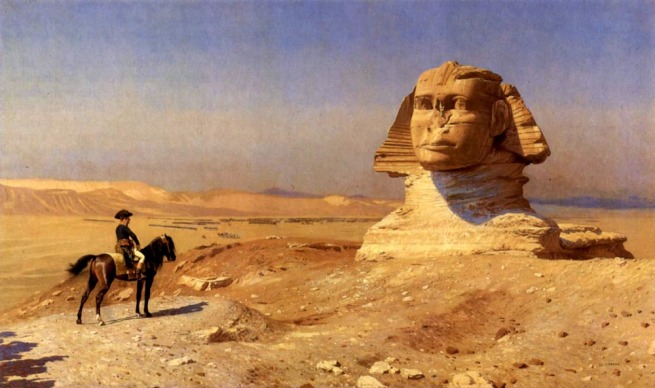
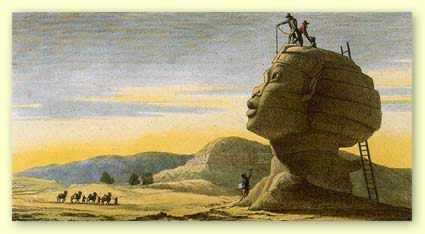
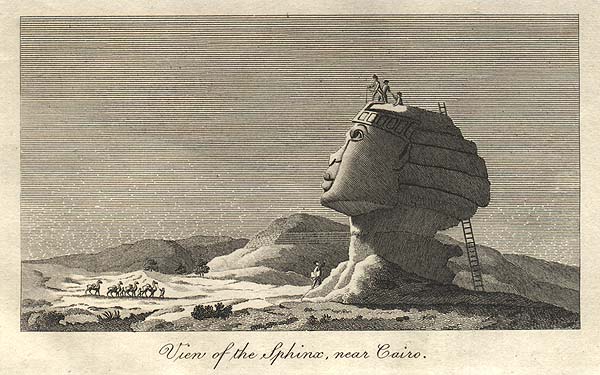
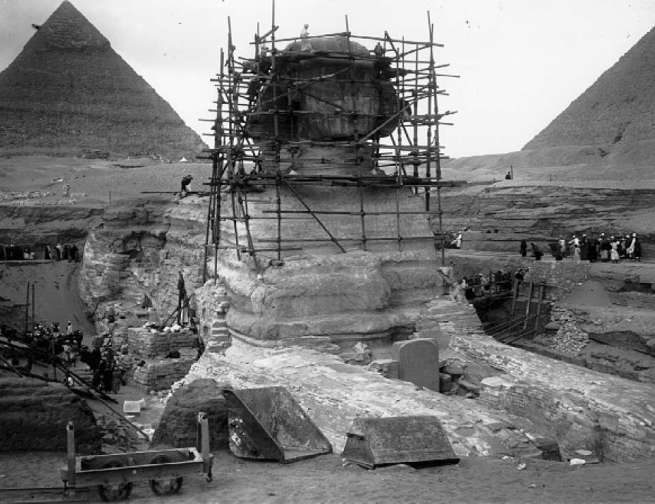
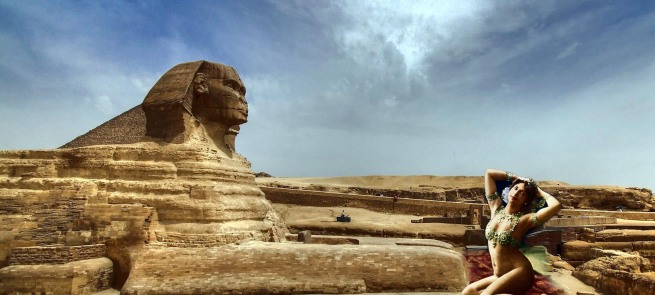
0 Responses to “Sphinx restoration”